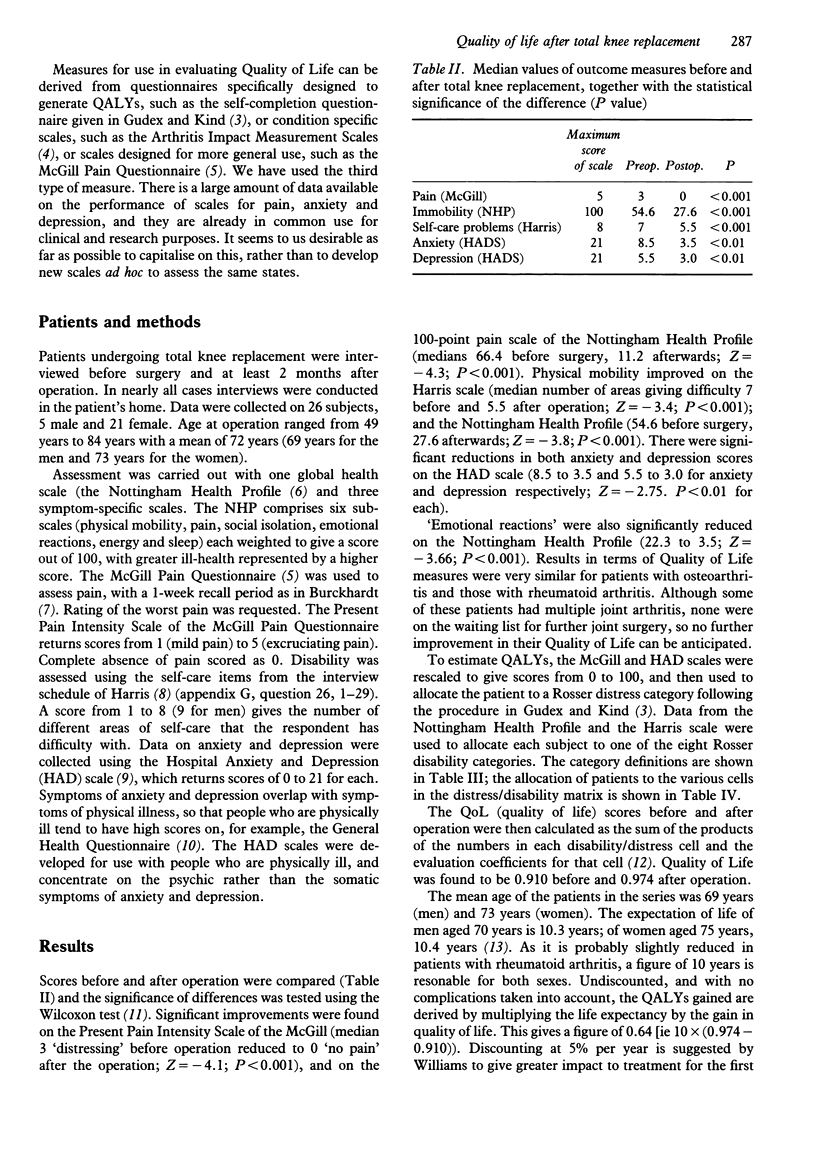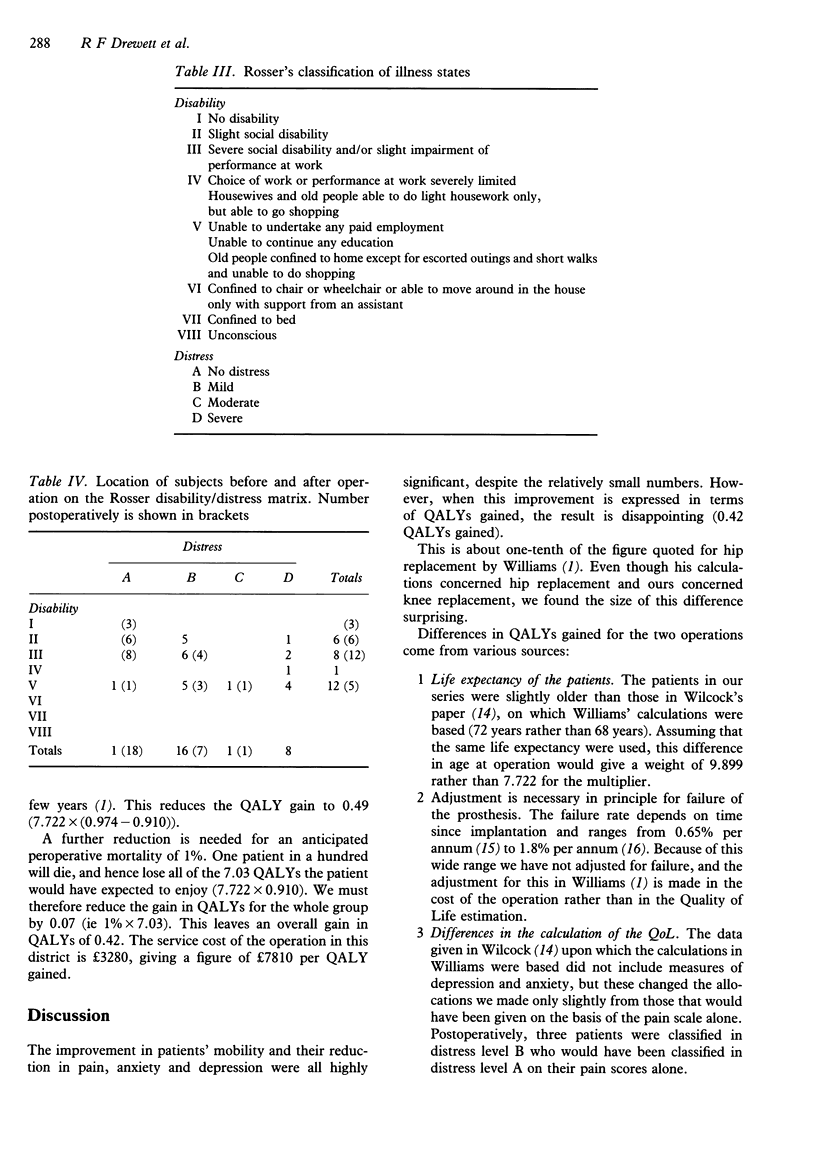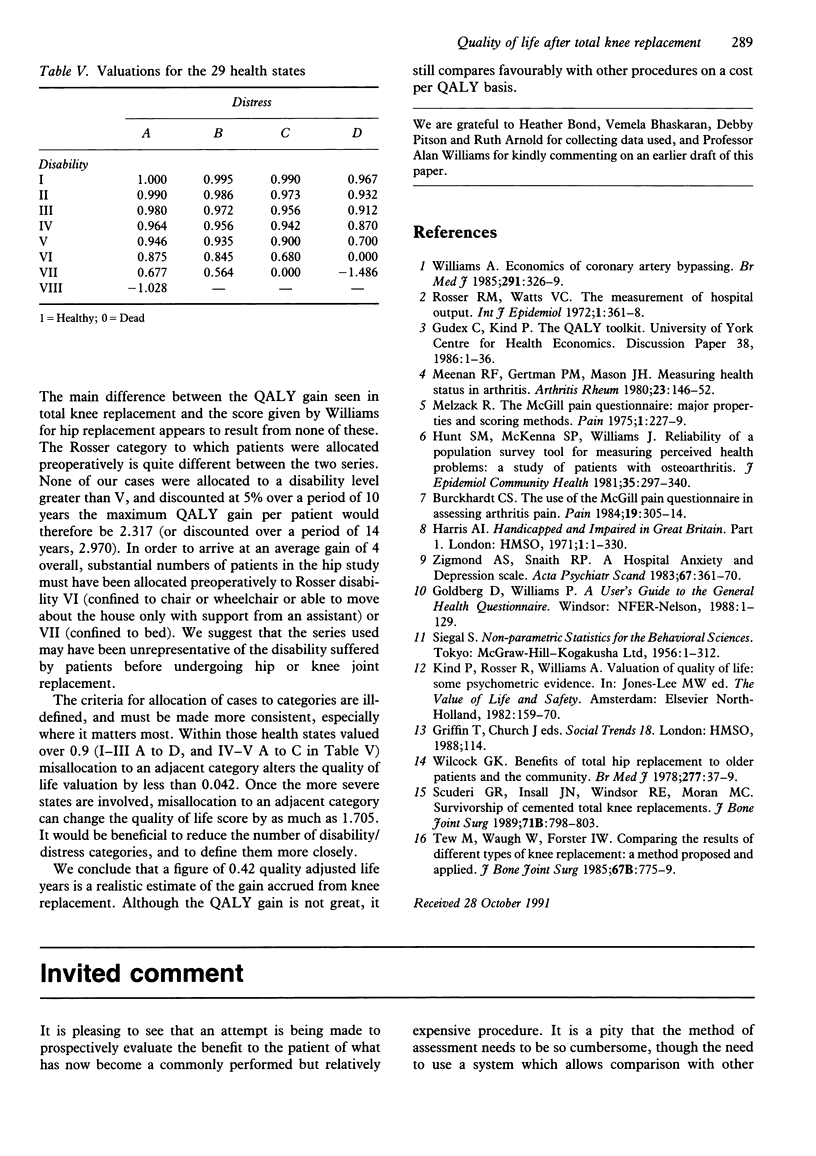Abstract
A series of 26 patients was studied before and after total knee replacement to determine the change in their quality of life, expressed as a gain in Quality Adjusted Life Years (QALYs). Global health status was assessed using the Nottingham Health Profile, disability by the Harris scale, pain by the McGill Pain Questionnaire, and anxiety and depression by the Hospital Anxiety and Depression Scale. Substantial reductions were found in pain, anxiety and depression, and a significant improvement was found in mobility. These data were used to generate a 'QALY' (Quality Adjusted Life Year) comparable to the measure used by Williams (1) in his comparative evaluation of medical and surgical treatments. A gain of only 0.42 QALY was found for knee replacement, which is about one-tenth the figure given by Williams for hip replacement. The difference appears to be attributable not to differences in the success of the operations, but rather to the scope that QALY calculations give for allocating comparable patients to different quality of life states. Tighter criteria are needed if QALYs are to be used to guide resource allocation.
Full text
PDF



Selected References
These references are in PubMed. This may not be the complete list of references from this article.
- Burckhardt C. S. The use of the McGill Pain Questionnaire in assessing arthritis pain. Pain. 1984 Jul;19(3):305–314. doi: 10.1016/0304-3959(84)90007-1. [DOI] [PubMed] [Google Scholar]
- Hunt S. M., McKenna S. P., Williams J. Reliability of a population survey tool for measuring perceived health problems: a study of patients with osteoarthrosis. J Epidemiol Community Health. 1981 Dec;35(4):297–300. doi: 10.1136/jech.35.4.297. [DOI] [PMC free article] [PubMed] [Google Scholar]
- Meenan R. F., Gertman P. M., Mason J. H. Measuring health status in arthritis. The arthritis impact measurement scales. Arthritis Rheum. 1980 Feb;23(2):146–152. doi: 10.1002/art.1780230203. [DOI] [PubMed] [Google Scholar]
- Rosser R. M., Watts V. C. The measurement of hospital output. Int J Epidemiol. 1972 Winter;1(4):361–368. doi: 10.1093/ije/1.4.361. [DOI] [PubMed] [Google Scholar]
- Scuderi G. R., Insall J. N., Windsor R. E., Moran M. C. Survivorship of cemented knee replacements. J Bone Joint Surg Br. 1989 Nov;71(5):798–803. doi: 10.1302/0301-620X.71B5.2584250. [DOI] [PubMed] [Google Scholar]
- Tew M., Waugh W., Forster I. W. Comparing the results of different types of knee replacement. A method proposed and applied. J Bone Joint Surg Br. 1985 Nov;67(5):775–779. doi: 10.1302/0301-620X.67B5.4055880. [DOI] [PubMed] [Google Scholar]
- Williams A. Economics of coronary artery bypass grafting. Br Med J (Clin Res Ed) 1985 Aug 3;291(6491):326–329. doi: 10.1136/bmj.291.6491.326. [DOI] [PMC free article] [PubMed] [Google Scholar]
- Zigmond A. S., Snaith R. P. The hospital anxiety and depression scale. Acta Psychiatr Scand. 1983 Jun;67(6):361–370. doi: 10.1111/j.1600-0447.1983.tb09716.x. [DOI] [PubMed] [Google Scholar]


